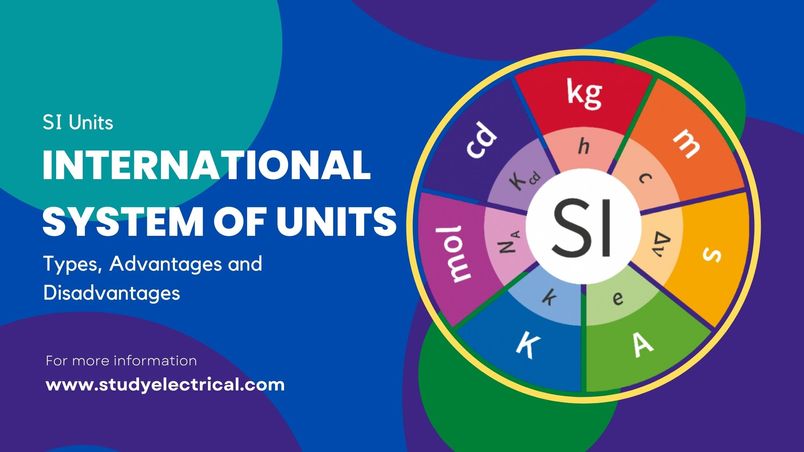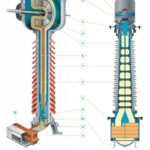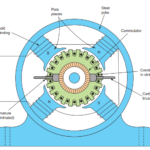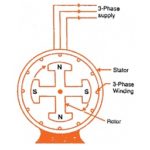The International System of Units (abbreviated SI Units from the French Système international d’unités) is the modern form of the metric system and is generally a system of units of measurement devised around seven base units and the convenience of the number ten. It is the world’s most widely used system of measurement, both in everyday commerce and in science.
The system has been nearly globally adopted. Three countries which have not adapted are Burma (Myanmar), Liberia, and the United States.
The International System (or SI system) of Units consists of a set of units together with a set of prefixes.
The units of S.I. can be divided into two subsets.
- There are seven base units: Every base unit represents different kinds of physical quantities. From these seven base units, several other units are derived.
- In addition to the SI units, there is also a set of non-SI units accepted for use with SI which includes some commonly used units such as the litre.
Standard Units and Definition
The table below shows the standard units and their definition.
| Physical Quantity | Standard Unit | Definition |
|---|---|---|
| Length | metre | The length of path travelled by light in an interval of 1/299 792 458 seconds |
| Mass | kilogram | The mass of a platinum-iridium cylinder kept in the International Bureau of Weights and Measures, S’evres, Paris |
| Time | second | 9.192631770 x 109 cycles of radiation from vaporized caesium-133 (an accuracy of 1 in 1012 or 1 second in 36000 years) |
| Temperature | kelvin | The temperature difference between absolute zero and the triple point of water is defined as 273 16 kelvin |
| Current | ampere | One ampere is the current flowing through two infinitely long parallel conductors of negligible cross-section placed 1 metre apart in a vacuum and producing a force of 2 x 10-7 Newtons per metre length of conductor |
| Luminous intensity | candela | One candela is the luminous intensity in a given direction from a source emitting monochromatic radiation at a frequency of 540 terahertz (x 1012 Hz) and with a radiant density in that direction of 1.4641 mW/steradian . ( 1 steradian is the solid angle which, having its vertex at the centre of a sphere, cuts off an area of the sphere surface equal to that of a square with sides of length equal to the sphere radius) |
| Matter | mole | The number of atoms in a 0.012 kg mass of carbon-12 |
Classes of SI System
The SI system is divided into three classes:
- Fundamental Unit
- Supplementary Unit
- Derived Unit
Fundamental Units
The units which are independent and are not related to each other are known as Fundamental Unit. These units do not vary with time, temperature and pressure etc. There are seven fundamental units, as given below:
Fundamental Units: length, mass, time, electric current, temperature, luminous intensity and quantity of matter.
| Quantity | Standard Unit | Symbol |
|---|---|---|
| Length | metre | m |
| Mass | kilogram | kg |
| Time | second | s |
| Electric current | ampere | A |
| Temperature | Kelvin | K |
| Luminous intensity | candela | cd |
| Matter | mole | mol |
Supplementary Units
There are two supplementary units which are added to the S.I. system of units.
Radian for the plane angles: The plane angles subtended by an arc of a circle equal in length to the radius of the circle. It is denoted as rad.
The solid angle subtended at the centre of a sphere by the surface whose area is equal to the square of the radius of the sphere. It is denoted as sr.
Supplementary units are neither base units nor derived from base units.
| Quantity | Standard Unit | Symbol |
|---|---|---|
| Plane angle | radian | rad |
| Solid angle | steradian | sr |
Derived Units
The units which are derived from fundamental units or which can be expressed in terms of the fundamental units are called Derived Unit. Every derived unit originates from some physical law defining that unit. This unit is recognized by its dimensions, which can be defined as the complete algebraic formula for the derived unit.
The number of quantities in science is without limit, and it is not possible to provide a complete list of derived units. However, the table below shows some examples of derived unit:
| Quantity | Standard Unit | Unit Standard |
|---|---|---|
| Arca square | metre | rn2 |
| Volume cubic | metre | m3 |
| Velocity | metre per second | rn/s |
| Acceleration | metre per second squared | m/s2 |
| Angu lar velocity | rad ian per second | rad/s |
| Angu lar acceleration | rad ian per second squared | rad/s2 |
| Density | kilogram per cubic metre | kg/rn 3 |
Advantages of SI Units
Although there are several advantages of SI units yet the following are important from the subject point of view:
- SI unit measurement is a coherent system of units, i.e., a system based on a certain set of fundamental units, from which all derived units are obtained by multiplication or division without introducing numerical factors.
- SI unit measurement is a rational system of units, as it assigns only one unit to a particular quantity. For example, joule is the unit assign to all types of energies. This is not so in other system of units. For example, in MKS system of units, mechanical energy is in joules, heat energy is in calories and electrical energy is in Kilowatt hour.
- SI unit measurement system is an absolute system of units. There are no gravitational systems of units in this system. Thus the use of factor ‘g’ is eliminated.
- SI unit measurement system is a metric system, i.e., the multiples and the submultiples of units are expressed as the exponents of 10.
- In the current electricity, the absolute unit of electrical quantities like ampere (A) for electric current, volt (V) for potential difference, ohm (Ω) for resistance, Henry (H) for inductance, farad (f) for capacitance and so on, happens to be the practical units of these quantities.
The S.I. system of units applies to all branches of science, but the MKS system of units is confined to mechanics only.
Disadvantages of SI Units
Following are some of the disadvantages of S.I units:
- The non SI “time units” minute and hour will still continue to be used until the clocks and watches are all changed to kilo seconds and mega second etc.
- The base unit kilogram (kg) includes a prefix, which creates an ambiguity in the use of multipliers with gram.






